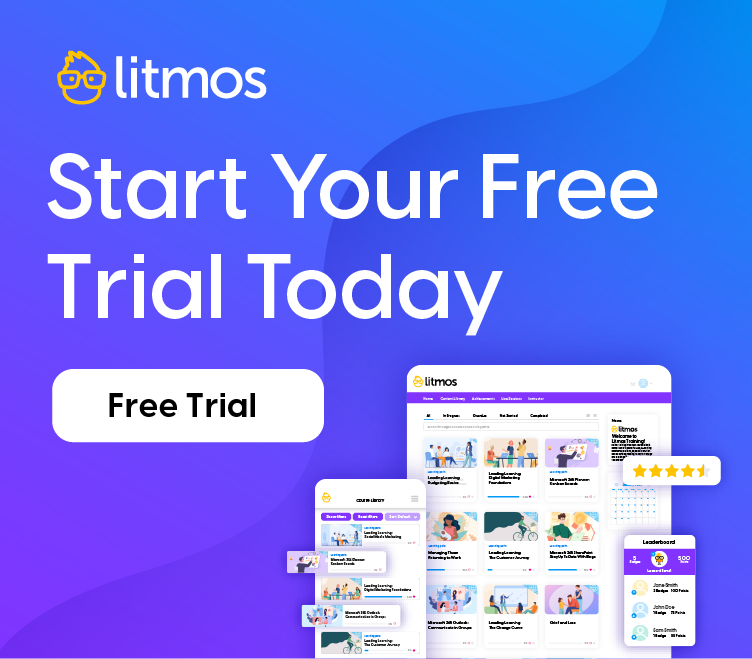What is Blended Learning? The Benefits of a Modern Approach
Key Takeaways:
|
The term “blended learning” certainly isn’t new. However, as learning and development (L&D) evolves, so has the definition of this term. While the true meaning of “blended learning” has become more nuanced, learning professionals agree that taking a modern, multi-modal approach to learning can make a lasting impact on both learning and business outcomes. In this blog post, we’ll unpack the updated definition and core benefits of blended learning and provide three questions that your L&D team can use to refine its blended learning strategy.
Is blended learning really just as simple as combining in-person and online learning? While a multi-modal learning approach is certainly a core component of blended learning, the definition in 2024 is no longer so simple.
As technology continues to evolve and offer new ways of delivering training content, the concept of blended learning has also evolved. It now encompasses a wide range of techniques and strategies that combine traditional classroom instruction with online learning modalities such as live virtual instructor-led training (VILT), self-paced online learning, virtual simulations, just-in-time training, and more.
Brandon Hall’s Learning and Development Framework Report argues that true blended learning is more than the sum of its parts. True blended learning requires a holistic approach, in which all learning – regardless of delivery method – fits into a larger theme and extends beyond the classroom or completed module.
“In a blended learning environment with mixed modalities, the curriculum must be rooted in a framework approach, where informal and on-the-job learning follows a consistent theme beyond the originating learning event, such as a classroom lecture or online course. Frameworks also provide the learner with the opportunity to receive assistance through performance support mechanisms embedded in the curriculum that anticipate when learners may ‘get stuck’ and have challenges in applying what they learned.”
Taking a modern approach blended learning
While we may be tempted to label any combination of learning modalities as “blended learning,” we must remember that a modern blended learning strategy doesn’t simply mean combining an in-person training session with a few online modules. A truly modern blended approach allows for a cohesive, personalized, and flexible learning experience, giving participants the opportunity to engage with relevant and timely content in a variety of ways, even after their official training is through.
How can your organization enhance its blended learning strategy? Use these three questions to measure the impact of your blended learning approach:
1. Does your blended learning approach deepen understanding and retention?
When companies adopt a framework approach like the one discussed above, the results can be powerful. To enhance blended learning, you need to reinforce the core concepts being taught and support your employees long after they have completed their training.
- Improve retention through blended learning by using your LMS to practice spaced repetition, automating quizzes to learners, days, weeks, or months after they have finished training.
- Empower employees to continue building skills on the job by centralizing just-in-time resources like playbooks, infographics, short videos, and manuals in your LMS and making them easily accessible, online and offline.
- Provide social learning opportunities and gamify learning with forums, leaderboards, badges and simulations, so that employees can exchange knowledge, ask questions, collaborate, and even compete!
2. Does your blended learning approach improve efficiency?
If your blended learning strategy isn’t properly integrated into the flow of work, isn’t easy to implement, and isn’t quickly getting your teams up to speed, it’s not going to meet your learners needs or your business goals.
Traditional training costs often include travel and hotel expenses, unless your company is one that has on-site facilities for large in-person training sessions; however, this is becoming less common with the increase in remote and global employment. That’s why many companies now rely on LMSs for blended learning. The ideal LMS should be easy-to-use, for both admins and learners and should offer APIs and integrations that help HR and L&D teams seamlessly weave learning into your organization’s existing technological ecosystem. An LMS with built-in content authoring capabilities and a library of pre-built training courses can cut down on administrative labor, so that you can focus on getting your employees the skills and competencies they need to succeed.
3. Does your blended learning approach cater to a diverse array of learners?
L&D professional knows that every learner is different. That’s what makes a blended learning approach so appealing! Being able to provide training content in multiple formats allows instructional designers to meet more learner needs by offering a wide range of delivery options.
Conducting a needs assessment can help instructional designers build blended learning content that gives learners what they need, when and where they need it. Litmos Chief Learning Office Dr. Jill Stefaniak puts it best: “Learners stay engaged with training materials when they can to see the utility, relevance, and value in what is being shared with them. They need to be able to see why they’re learning and how they can apply the content to enhance their skills and their ability to complete work-related tasks.”
While the definition of blended learning has expanded, the core benefits remain the same. A truly blended learning approach combines a variety of in-person and online learning modalities to create a cohesive and personalized learning experience. By keeping your organization’s desired learning outcomes in mind and leveraging technological solutions, instructional designers can deepen understanding and retention, improve costs and efficiency, and cater to a diverse array of learners.
Ready to Build a Better Training Program?
Don’t just read about the benefits—see them in action. Schedule a live, personalized demo today and discover how the Litmos platform makes it simple to build, manage, and measure a world-class blended learning strategy.




